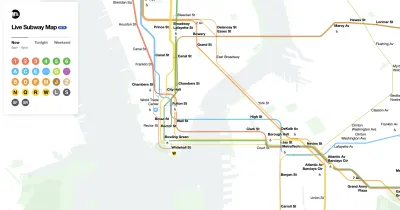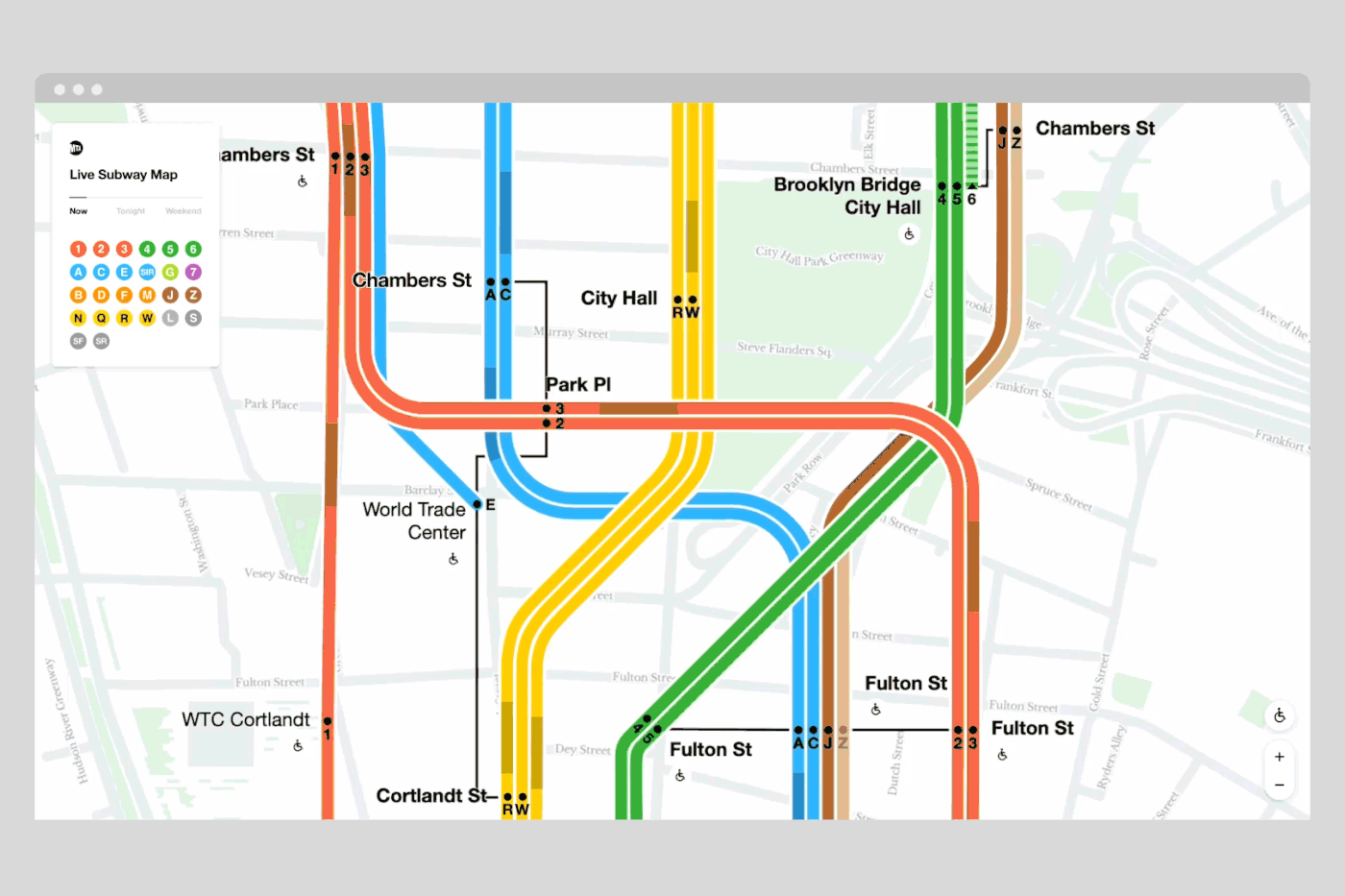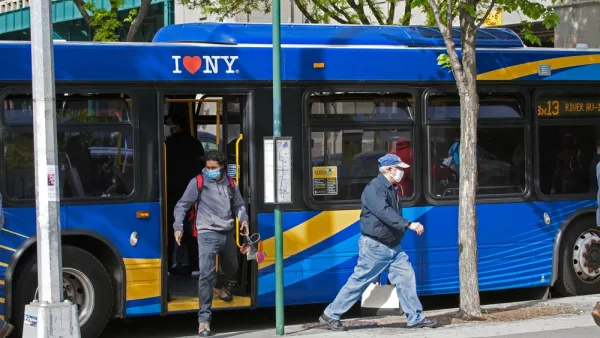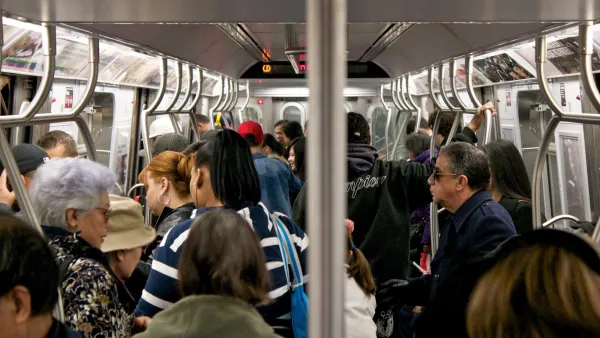There's a new chapter, and maybe an end, for the "Great Subway Map Debate."

Christopher Bonanos reports: "Today, the MTA is unveiling its new digital map, the first one that uses the agency’s own data streams to update in real time."
After giving a background on the historical precedents for the new map, Bonanos suggests that the map is perhaps the best of both worlds: a combination of the aesthetic accomplishments of the map designed by Massimo Vignelli in the early 1970s, and the more practical, user-focused approach designed by Michael Hertz Associates later the same decade.
"Vignelli’s diagram was a joy to look at and was nearly useless as an aboveground navigation tool. Hertz and Tauranac’s map functioned pretty well as a map to getting around town but inspired comparatively little delight," writes Bonanos to describe the precedent map designs.
The new map, however, is literally contemporary, writes Bonanos:
It’s so thoroughly up-to-the-moment that you can watch individual trains move around the system on your phone. Pinch your fingers on the screen, and you can zoom out to see your whole line or borough, as the lines resolve into single strands. Drag your fingers apart, and you’ll zoom in to see multiple routes in each tunnel springing out, widening into parallel bands — making visible individual service changes, closures and openings, and reroutings. Click on a station, and you can find out whether the elevators and escalators are working.
Image courtesy of the Metropolitan Transportation Authority.
The new map is a product of Work & Co, and an expert as august as Michael Beirut has declared the new map to be "legitimately revolutionary," according to Bonanos. The article includes a lot more detail about how the leadership at the New York Metropolitan Transportation Authority kicked off the project and guided the work to its revolutionary completion.
FULL STORY: First Look: New York’s Digital Subway Map Comes Alive Today

National Parks Layoffs Will Cause Communities to Lose Billions
Thousands of essential park workers were laid off this week, just before the busy spring break season.

Retro-silient?: America’s First “Eco-burb,” The Woodlands Turns 50
A master-planned community north of Houston offers lessons on green infrastructure and resilient design, but falls short of its founder’s lofty affordability and walkability goals.

Delivering for America Plan Will Downgrade Mail Service in at Least 49.5 Percent of Zip Codes
Republican and Democrat lawmakers criticize the plan for its disproportionate negative impact on rural communities.

Test News Post 1
This is a summary

Test News Headline 46
Test for the image on the front page.

Balancing Bombs and Butterflies: How the National Guard Protects a Rare Species
The National Guard at Fort Indiantown Gap uses GIS technology and land management strategies to balance military training with conservation efforts, ensuring the survival of the rare eastern regal fritillary butterfly.
Urban Design for Planners 1: Software Tools
This six-course series explores essential urban design concepts using open source software and equips planners with the tools they need to participate fully in the urban design process.
Planning for Universal Design
Learn the tools for implementing Universal Design in planning regulations.
EMC Planning Group, Inc.
Planetizen
Planetizen
Mpact (formerly Rail~Volution)
Great Falls Development Authority, Inc.
HUDs Office of Policy Development and Research
NYU Wagner Graduate School of Public Service






























